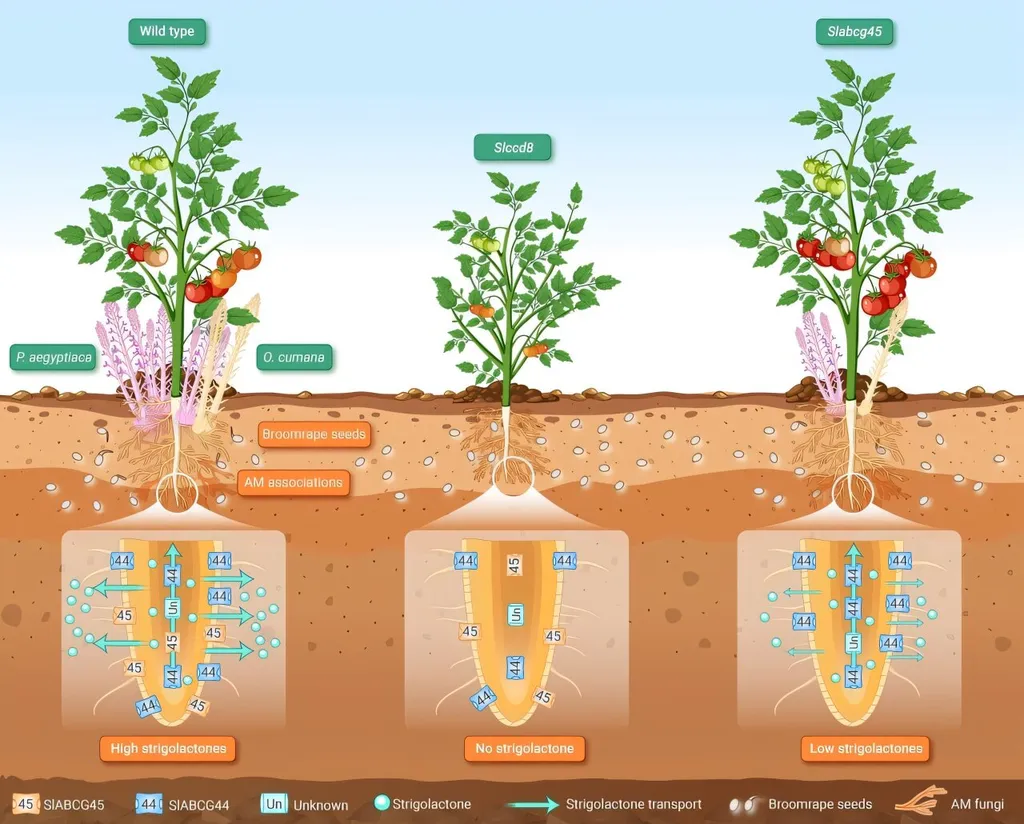In the world of tomato production, parasitic weeds are a formidable foe, causing billions in losses annually. Traditional control methods, often reliant on chemicals, pose significant environmental and health risks. However, a new frontier in biotechnology is emerging, offering a promising alternative: non-coding RNAs (ncRNAs). A recent review article published in the Turkish Journal of Agriculture: Food Science and Technology, led by Halim Can Kayikci from the Bati Akdeniz Agricultural Research Institute in Antalya, Türkiye, sheds light on the potential of ncRNAs in managing parasitic plant infections and enhancing tomato breeding.
Parasitic weeds like Striga and Orobanche are notorious for their devastating impact on tomato crops. These weeds latch onto the host plant, siphoning off nutrients and water, ultimately stunting growth and reducing yields. “The problem is serious and widespread,” notes Kayikci, “but our current control methods are limited and often harmful.”
Enter ncRNAs, a class of RNA molecules that do not code for proteins but play crucial roles in gene regulation. These molecules are gaining attention for their potential applications in plant breeding, pesticide development, and understanding gene function. Kayikci’s review explores the mechanisms of ncRNAs, their transfer mechanisms, and their potential usage areas, highlighting their role in plant breeding.
One of the most intriguing aspects of ncRNAs is their ability to move between plants. This inter-plant communication could be harnessed to develop novel pest control strategies. “The use of ncRNAs has the potential to be a powerful alternative to deal with parasitic weeds,” Kayikci explains. “With new technology and new approaches, we can explore this potential more thoroughly.”
The implications for the agricultural sector are substantial. By understanding and utilizing ncRNAs, researchers can develop more resilient tomato varieties that are less susceptible to parasitic infections. This could lead to significant increases in crop yields and a reduction in the need for harmful chemical pesticides.
Moreover, the insights gained from studying ncRNAs in tomatoes could have broader applications in other crops, potentially revolutionizing the way we approach plant breeding and pest management. “The role of ncRNAs in tomato improvement deserves closer attention,” Kayikci emphasizes. “Given these challenges, we need to explore every avenue to enhance our crops’ resistance and productivity.”
As the agricultural industry grapples with the challenges posed by parasitic weeds, the findings from Kayikci’s review offer a glimmer of hope. By leveraging the power of ncRNAs, we may be on the cusp of a new era in plant breeding and pest management, one that is more sustainable and environmentally friendly. The journey is just beginning, but the potential is immense, and the stakes are high. The future of tomato production, and perhaps agriculture as a whole, could very well hinge on our ability to harness the power of these tiny, non-coding molecules.

